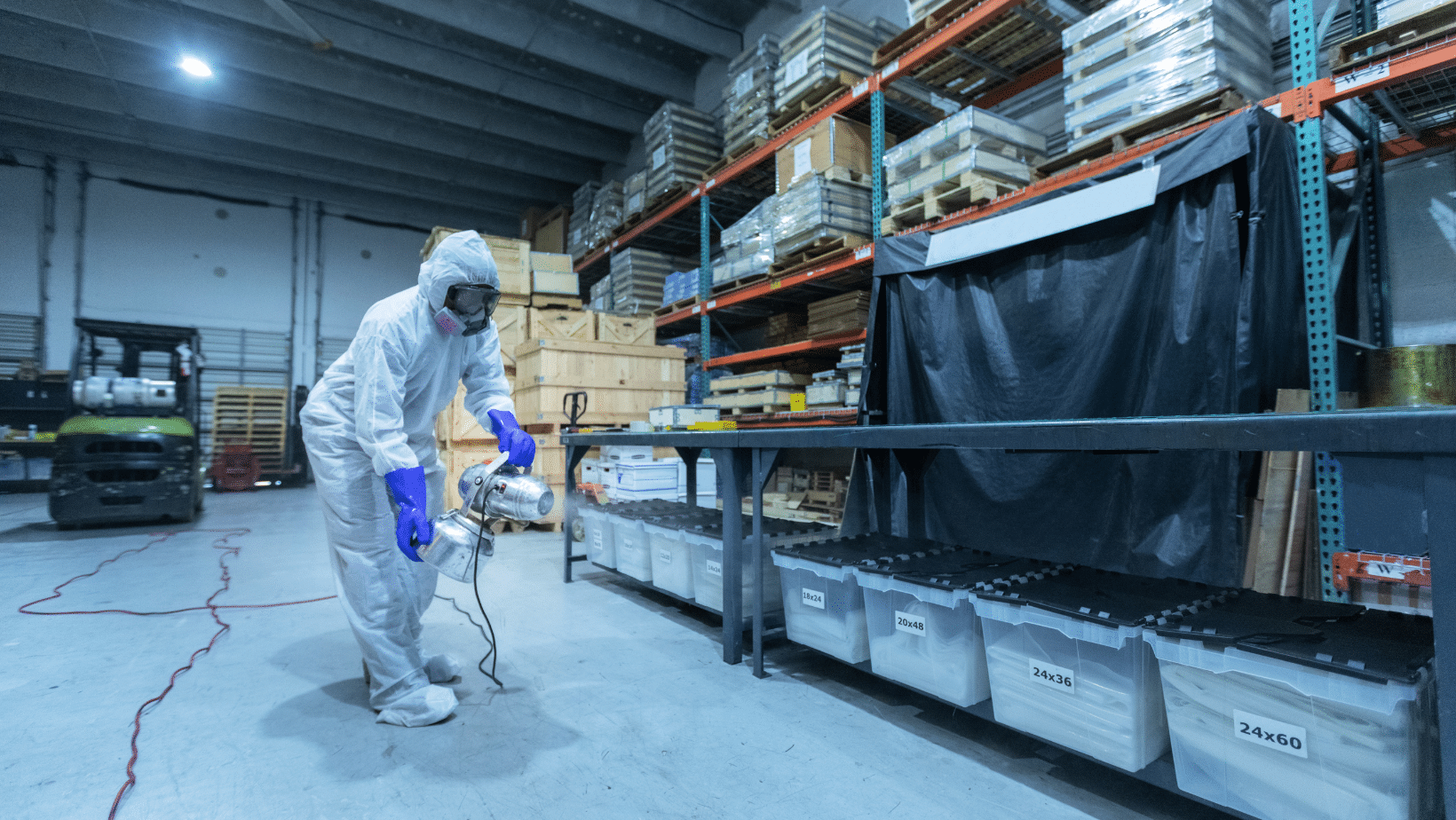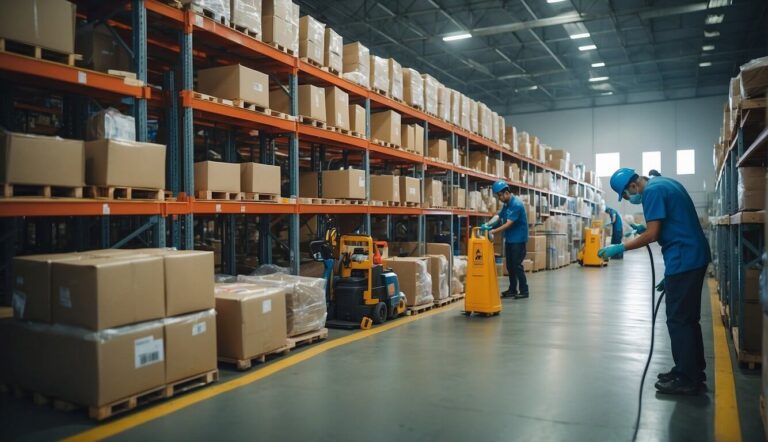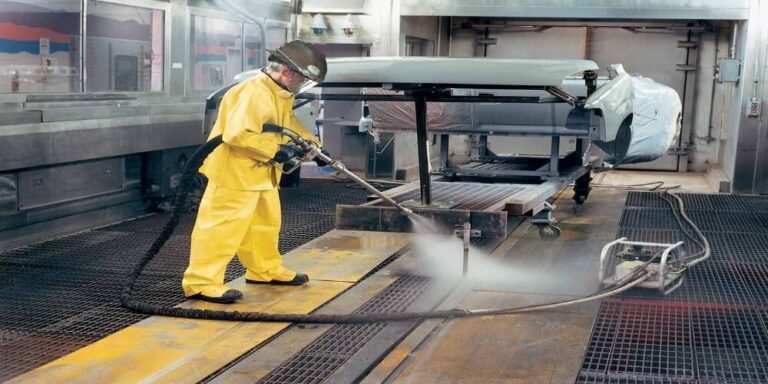Factories are busy environments filled with machinery, tools, and constant production. Over time, dust, grease, and debris settle into the most unexpected corners. For industrial cleaning specialists, some areas present greater challenges than others. These difficult spots can go unnoticed during routine maintenance, but over time, they become a serious issue if left untreated.Knowing the toughest spots and their importance is essential for maintaining a safe and productive workplace.
Behind and Beneath Machinery
Heavy equipment is the backbone of any factory. These machines are often anchored or bolted to the floor, making the areas behind and underneath nearly impossible to reach during day-to-day cleaning. Grease, metal shavings, and even stray parts can build up here. The limited accessibility means dirt sits for months, sometimes years. Cleaning these spots often requires partial dismantling of equipment or using specialized vacuum systems that can reach tight spaces.
Ceilings, Beams, and Overhead Fixtures
Dust doesn’t only settle on the floor. In factories, ceilings collect particles stirred up from the constant movement of machines and materials. High beams, air ducts, and light fixtures become magnets for dirt, cobwebs, and even chemical residue. Cleaning overhead structures safely requires scaffolding, lifts, and trained professionals who understand how to operate at heights. These are places many overlook, but they can affect air quality and even lead to fire hazards if ignored.
Ventilation and Exhaust Systems
Airflow is critical in any industrial space. Ventilation systems help remove fumes, dust, and airborne particles. Over time, ducts and exhaust fans collect thick layers of grime. When these systems clog, airflow becomes restricted, forcing machines to work harder and increasing the risk of overheating. Cleaning them isn’t as simple as wiping a surface. It demands special equipment to reach deep into ducts and extract years of buildup without contaminating the work environment.
Storage Rooms and Shelving Units
Storage spaces in factories are often packed wall to wall with tools, spare parts, or packaging material. With such dense arrangements, cleaning becomes difficult. Dust and dirt find their way into boxes, beneath pallets, and on the tops of shelves that few ever check. These are the quiet corners where pests may hide or mold may grow if there’s even a hint of moisture. Keeping storage areas clean often requires scheduled deep cleans and temporary clearing of items.
Drains and Floor Channels
Factories that deal with fluids—whether chemicals, oils, or water—rely on floor drains and trench systems. These channels are essential for keeping the workspace dry and safe. But they’re also prone to clogs and foul odors when cleaning is inconsistent. Dirt, grease, and waste often settle at the bottom, out of sight. The challenge lies not only in access but also in dealing with potentially hazardous substances. It takes specialized skills to clean these systems safely and thoroughly.
Wall Panels and Corners
It’s easy to focus on the floor and machinery, but walls collect just as much grime. Especially in factories where oils or chemicals are used, splashes and vapors coat the walls over time. Corners and panel edges are especially tricky. These areas may appear clean from a distance but hide residue that becomes sticky or corrosive. High-pressure washers or chemical-safe cleaning agents are often required to break down buildup without damaging surfaces.
Production Lines and Conveyor Belts
Cleaning moving parts is one of the most delicate jobs. Conveyor belts and production lines are always in motion and difficult to shut down. Yet, they accumulate grease, dust, and sometimes even product spillage. Because these systems are critical to daily operations, cleaning must be done with minimal disruption. Each belt or roller must be handled with care, using tools that won’t leave residue or damage working surfaces.
Tight Stairwells and Catwalks
Access areas like stairwells, narrow walkways, or elevated catwalks often collect just as much grime as active work areas. Because they’re used for maintenance or inspection rather than production, cleaning is rarely prioritized. Yet these spaces are essential for worker movement and must remain safe and clear of debris. Cleaning them often means working in cramped conditions, with limited lighting and minimal room for equipment.
Control Panels and Electrical Cabinets
Electrical systems require extra caution. Dust, if allowed to settle into control panels, can interfere with functionality or even cause short circuits. These areas are sensitive and demand dry-cleaning methods. Wiping them down isn’t enough—every crevice must be addressed carefully, without introducing moisture. These are among the most technical areas to clean, requiring knowledge of both safety protocols and delicate handling.
Wrapping Up
While some tasks can be handled in-house, it often takes professional help to address the deepest cleaning needs. As industrial cleaning specialists, we’ve seen firsthand how these areas become problematic when neglected. Our work is about reaching the spots others can’t—making sure every inch of your facility operates at its best.
Whether you manage a warehouse, processing plant, or manufacturing site, now’s the time to assess those overlooked spaces. Prioritize deep cleaning before small problems turn into expensive repairs.
Ready to make sure your factory’s toughest areas are clean and safe? Let’s talk about how to reach those hard-to-reach places today.




